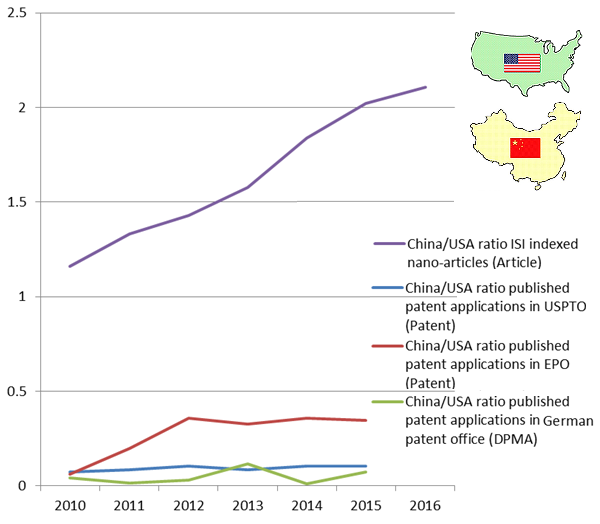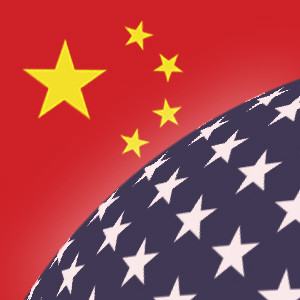As two powerful countries in the political and commercial aspects, China and United States have always had a fierce competition in various science and technology fields. In novel technologies such as nanotechnology, both countries try to possess a bigger share in its production and exploitation.
Analyses in StatNano Databank show that China has overtaken United States in nanoscience generation. Monitoring nanotechnology articles of China and United States in the past recent years shows that the publication of articles in China has been increasing drastically in a way that it has widened the gap between United States and itself.
According to StatNano statistics, China has published nearly 50,000 nanotechnology articles in 2016, while United States has published only 23,600 articles in the same year. It means that China published nanotechnology articles more than twice as much as United States did.

To analyze the articles qualitatively requires numerous indices. In a recent article, researchers have classified reliable journals and studied nanotechnology articles of China and United States on the basis of the journals. The results showed that United States has published more than 1000 nanotechnology articles in the journals with an impact factor of more than 20 from 2003 to 2013, while China has published only 76 nanotechnology articles in those journals. Studying the citations to every nanotechnology article shows the qualitative superiority of United States articles, in a way that United States ranked 5th in average citations indicator in 2015, but China ranked 10th. Therefore, United States has still maintained its superiority in the publication of nanotechnology articles from a qualitative point of view, but China is ahead quantitatively.
Studying nanotechnology articles in different journals shows that China has published plenty of articles about chemical synthesis, photocatalysts, and nanocomposites to the extent that the number of its nanotechnology articles in these three fields is more than the articles by the pioneer countries like United States, Japan, France, South Korea, Britain, and Italy. It means that China has invested on these three sections more than the global average and has had specific priorities in these fields.
Analyzing patent applications by these two countries in USPTO, EPO, and DPMA shows that United States has had more applications than China in the three offices. Although China has tried to increase its patents in EPO, it is still a great distance behind United States. In USPTO and DPMA offices, the two countries have had a constant standing in the past five years. This is true for the registered patents in the same period.
Statistics show that the gap between United States and China in nanotechnology is closing, although there are prominent differences between the outcomes of the two countries’ research centers from the scientific and technological viewpoints. China has established many research centers that focus on nanotechnology, whose outcome are the articles and patents that have been published, but there is still a big difference. The authors of the Chinese articles are in small groups in a certain number of research centers, while the authors in United States are distributed among different research centers. This index has been acquired by analyzing centers that have published the highest number of nanotechnology articles in the two countries. Although United States is considered a forerunner country in the field of nanotechnology now, China is getting close to it and during the next years, United States position may be challenged in nanotechnology. One out of 10 professional workforce in Silicon Valley is Chinese, so the mutual influence of the two countries in nanotechnology is a very intricate one.
It must be added that this comparison has been done on the basis of the two countries’ articles and patents and for a more precise analysis, other indices such as market volume in the two countries must be studied too.


